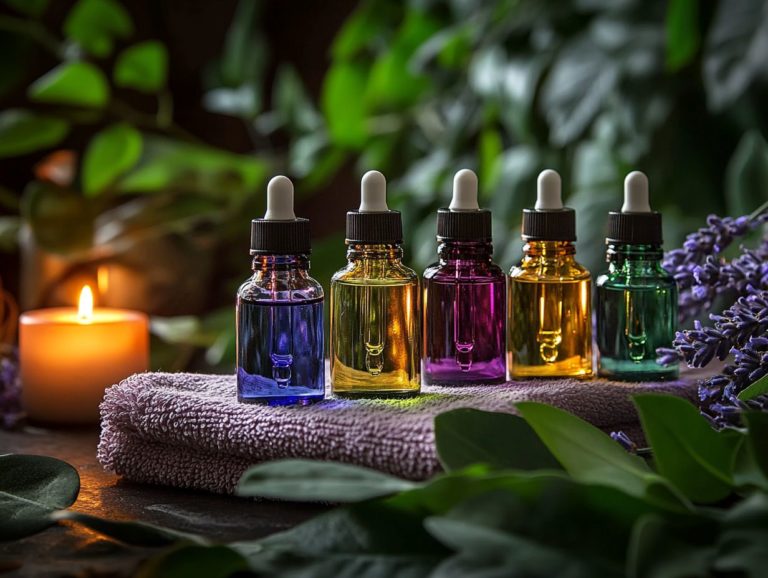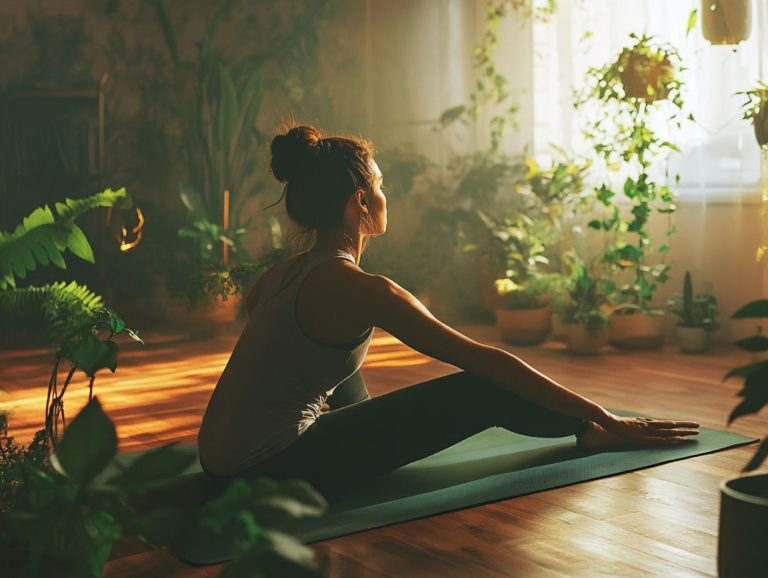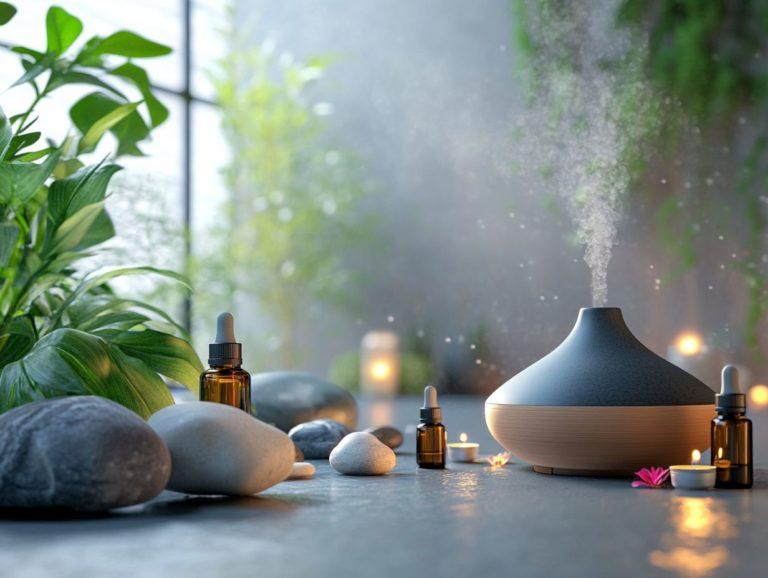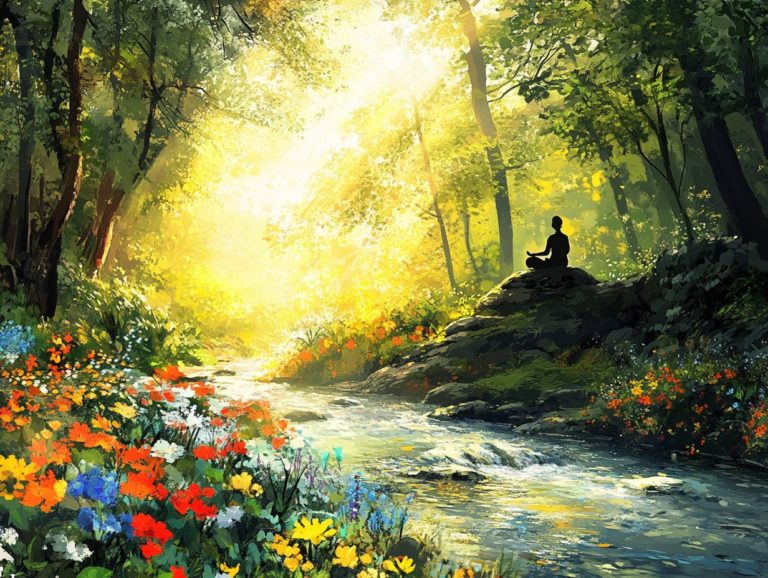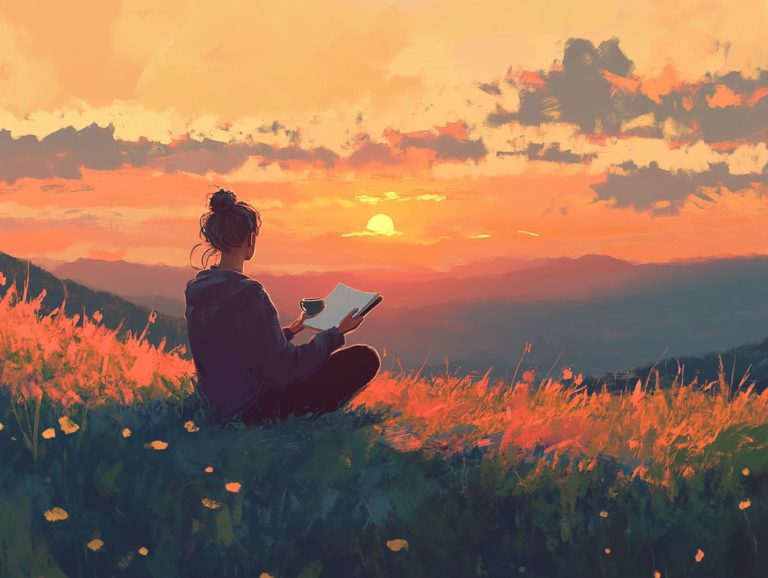How to Use Color Therapy for Relaxation
Color therapy, an ancient practice steeped in the traditions of various cultures, harnesses the transformative power of colors to cultivate relaxation and enhance well-being. This holistic approach has gained recognition as an effective alternative medicine.
This article delves into its rich history and underlying principles, illuminating the physical and mental benefits that color therapy can provide.
You ll discover practical methods to weave color therapy into your daily activities, learn how to select the ideal colors for optimal relaxation, and explore ways to amplify its effects by integrating it with other relaxation techniques.
Dive into the colorful world of color therapy and unlock an innovative pathway to tranquility!
Contents
- Key Takeaways:
- Understanding Color Therapy
- Benefits of Color Therapy for Relaxation
- How to Incorporate Color Therapy into Your Routine
- Choosing the Right Colors for Relaxation
- Combining Color Therapy with Other Relaxation Techniques
- Frequently Asked Questions
- What is color therapy, also known as chromotherapy, and how can it be used for relaxation?
- How do I incorporate color therapy into my daily routine?
- Which colors are best for relaxation?
- Can color therapy be used in addition to traditional relaxation methods?
- Are there any precautions to take when using color therapy for relaxation?
- How long does it take for color therapy to have an effect on relaxation?
Key Takeaways:
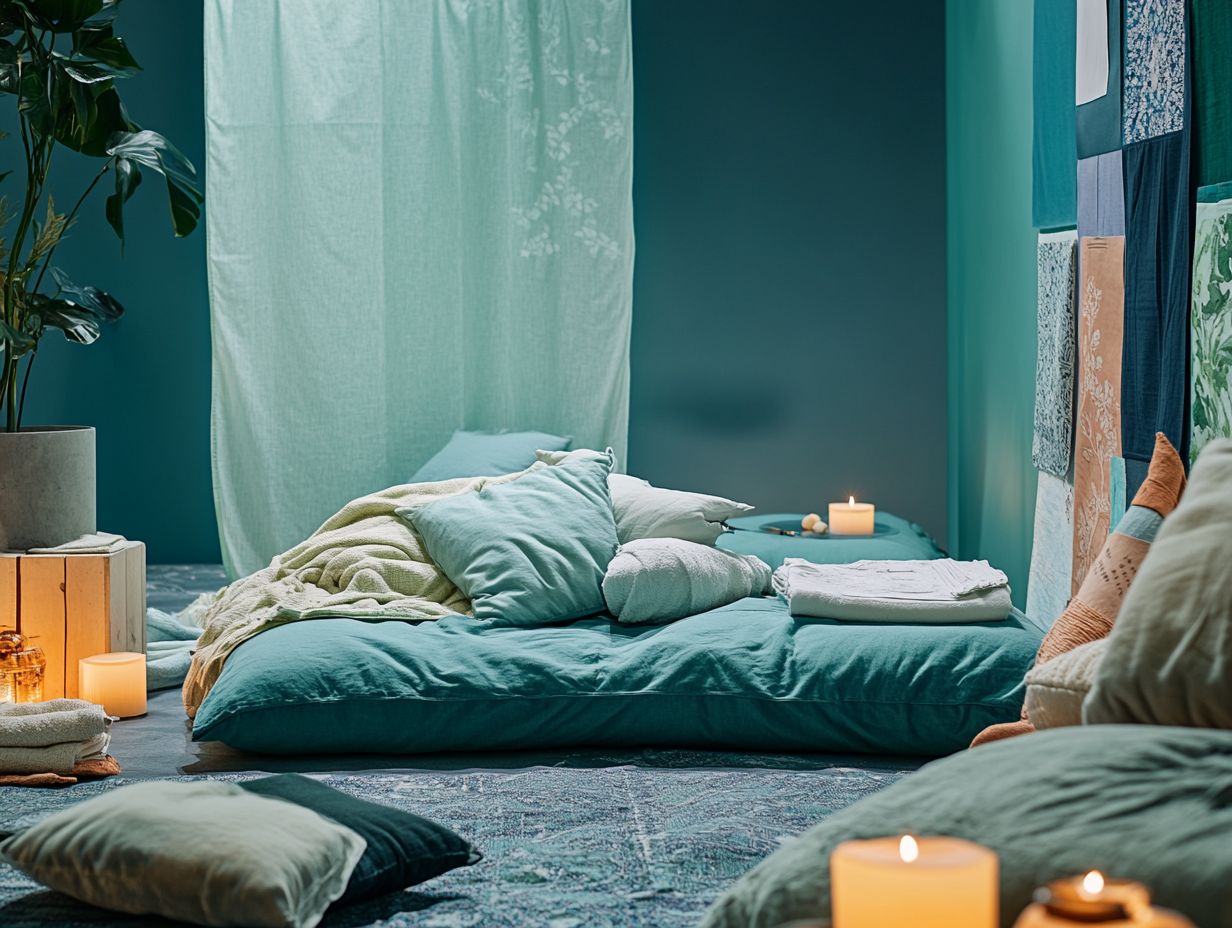
- Explore the history and principles of color therapy to better understand its potential impact on relaxation and stress relief.
- Discover the physical and mental benefits of color therapy, such as reducing stress and promoting a sense of calm, which can significantly enhance your emotional balance.
- Incorporate color therapy into your routine through various methods and techniques, such as visualization and using colored light.
Understanding Color Therapy
Color therapy, often referred to as chromotherapy, is an alternative medicine practice that uses the healing effects of colors to enhance both mental and physical health.
This method has its foundations in ancient civilizations, like the ancient Egyptians, who understood the profound impact of color in their healing routines. Similarly, Indian Ayurvedic medicine incorporates colors to foster emotional balance and well-being.
By grasping how colors influence your mood, energy levels, and overall health, you can take advantage of these findings to elevate your daily activities and enrich your quality of life through effective color therapy techniques.
History and Principles
The history of color therapy reaches back to ancient civilizations, where the Egyptians and practitioners of Indian Ayurvedic medicine recognized the profound therapeutic effects colors can have on the human mind and body.
These early pioneers utilized specific hues to promote healing, with the Egyptians ingeniously employing colored glass and light in their temples to craft therapeutic environments that foster relaxation and recovery. In parallel, Indian Ayurveda wove vibrant colors into holistic treatments, operating under the belief that different shades could harmonize the body s energy centers.
Over time, various cultures adapted these principles, culminating in the development of techniques like chromotherapy in the 19th century. This modern approach emphasizes the use of targeted colors to alleviate a range of ailments, highlighting the intricate connection between visual perception and emotional well-being.
Today, many wellness practitioners continue to delve into these ancient techniques, skillfully merging them with contemporary insights from psychology and neuroscience, including the growing field of color psychology.
Benefits of Color Therapy for Relaxation
Color therapy offers amazing benefits that can elevate your relaxation experience, making it a powerful ally in stress relief and mood enhancement.
Choose colors that match your feelings for better results, and harness various relaxation techniques to bolster both your mental health and physical health.
Engaging in color therapy often leads to a deep sense of calm and rejuvenation, helping you counteract daily stressors and fostering a more balanced emotional state, which is essential for overall well-being.
Physical and Mental Benefits
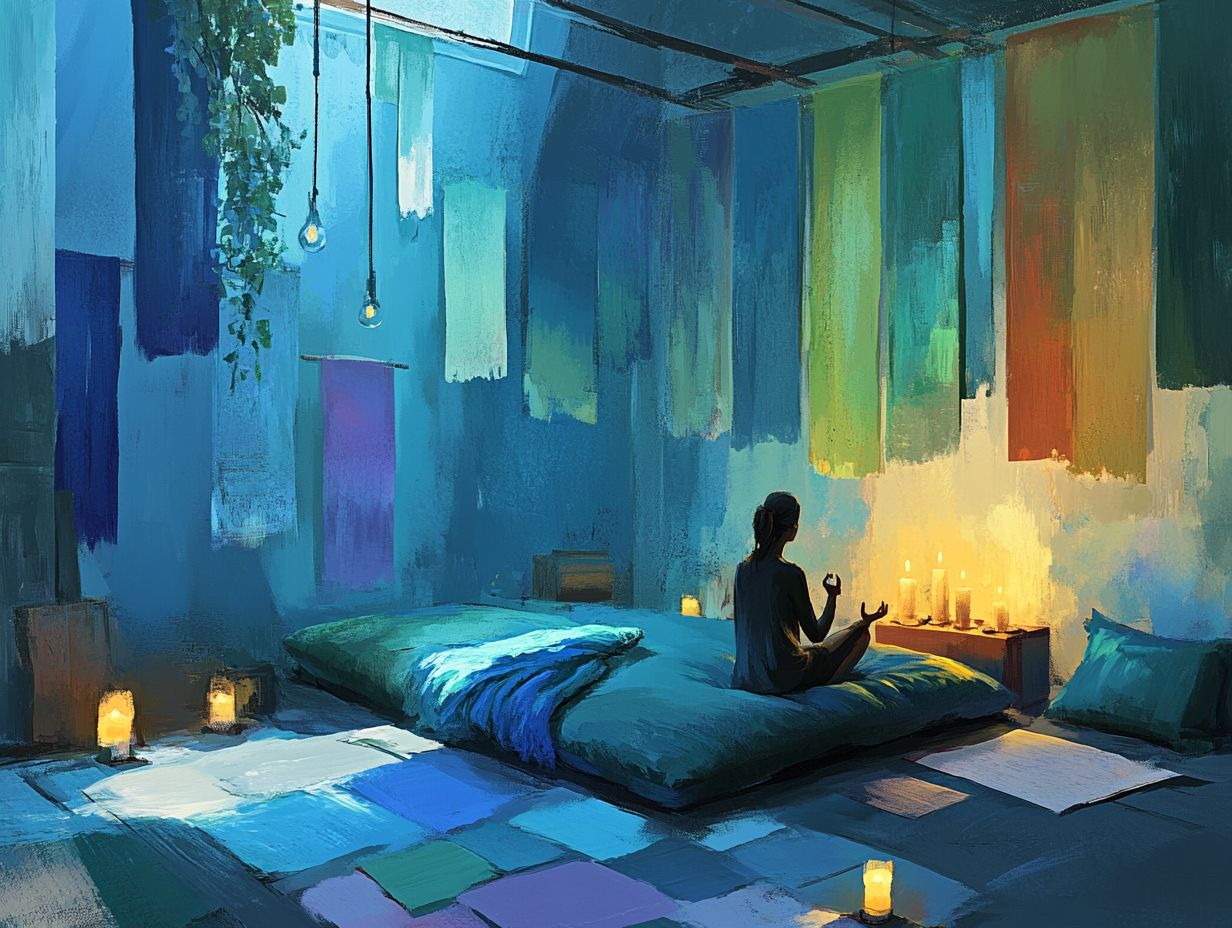
Color therapy offers remarkable physical and mental benefits. These include enhanced emotional balance, improved mental health, and effective stress relief.
If you re dealing with a type of depression that occurs during certain seasons, introducing bright colors like yellow and orange can work wonders. These hues mimic sunlight and elevate serotonin levels chemicals in the brain that affect mood providing much-needed relief.
Research shows that these vibrant colors can significantly reduce depressive symptoms.
Calming colors like blue and green help reduce anxiety. A study published in the Journal of Color Psychology revealed that participants surrounded by these shades reported lower stress levels and a greater sense of tranquility.
Start using color therapy today to boost your mood and enhance your overall well-being!
How to Incorporate Color Therapy into Your Routine
Transform your daily routine with color therapy! By incorporating colors that encourage relaxation and emotional balance, whether through color visualization techniques, home decor choices, or meditation practices, you can create an environment that promotes mental clarity and alleviates stress.
This intentional approach empowers you to harness the profound effects of color, supporting your mental health and addressing your emotional needs with purpose and grace.
Methods and Techniques
You can explore various methods and techniques in color therapy to enhance both your mental and physical health. Techniques include color visualization, color breathing, and specific meditation practices.
One popular approach is color breathing, where you focus on inhaling a specific hue and visualize its qualities, fostering a sense of peace or energy. Utilizing colored lights can transform your environment and evoke a range of emotional responses.
Meditation techniques that incorporate specific colors can deepen your relaxation and clarity. By experimenting with these diverse methods, you can discover which ones resonate most profoundly with you.
This allows for a personalized experience that promotes your well-being and self-awareness through effective color therapy techniques.
Choosing the Right Colors for Relaxation
Selecting the right colors for relaxation is a crucial element of color therapy. Each hue evokes distinct emotions and influences both the mind and body in unique ways.
Warm colors like red and yellow energize you, while cool colors such as blue and green foster tranquility and emotional equilibrium.
Understanding the meanings and effects of these colors allows you to take charge of your color therapy practices, enhancing your relaxation experiences and emotional balance.
Meanings and Effects of Different Colors
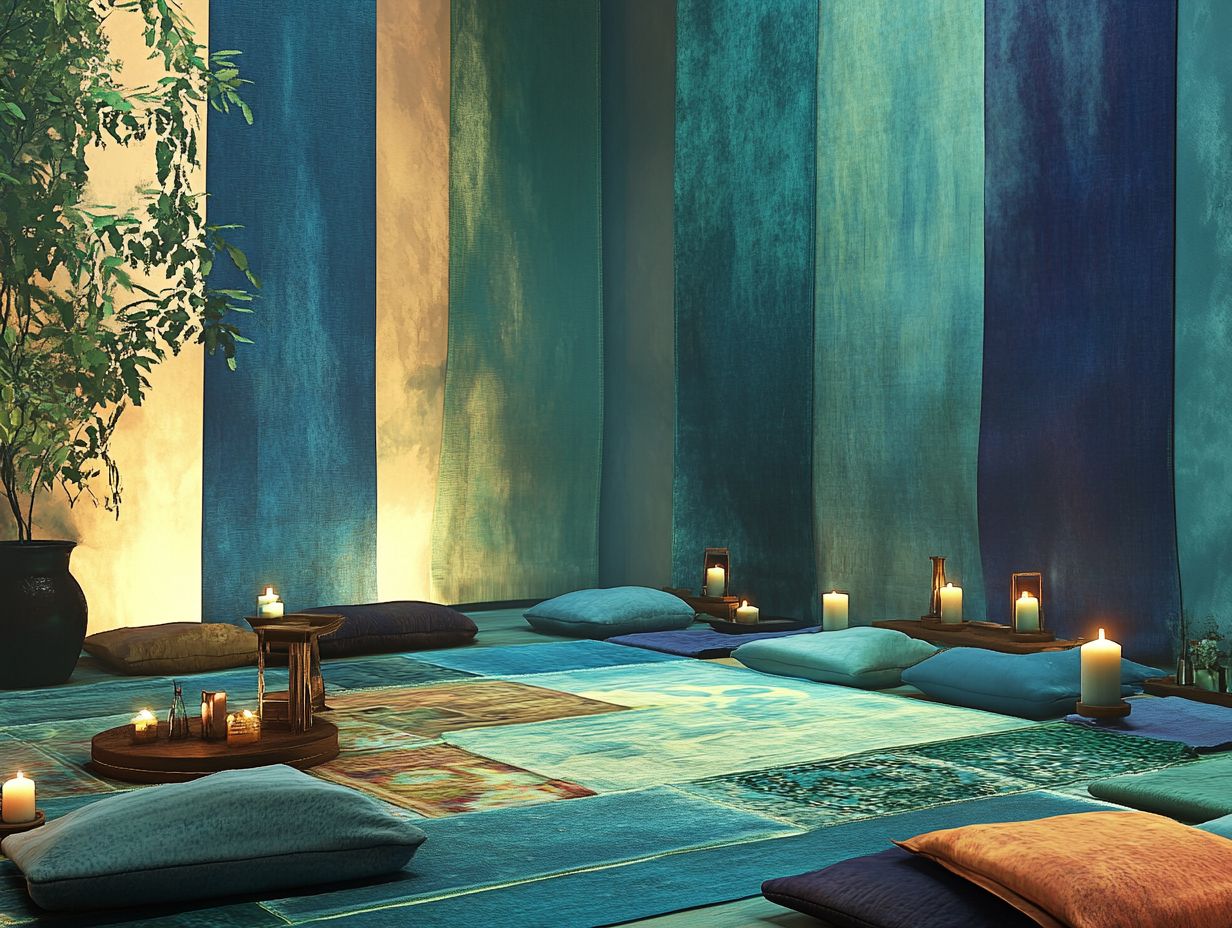
Each color possesses its own distinct meanings and effects, making it essential to grasp how they shape your emotions and overall well-being in color therapy. This includes the effects of purple, black, white, pink, and brown.
Take red, for example; it often stirs feelings of energy and passion, making it an excellent choice for spaces designed to spark action and creativity. In contrast, blue is synonymous with tranquility and calmness, frequently employed in areas intended for relaxation and meditation.
By understanding these color associations, you can enhance emotional balance in your daily life. Integrating soothing blues into your bedroom or vibrant reds into your creative workspace cultivates the desired atmosphere.
Such practical applications are crucial, aligning your surroundings with your psychological needs.
Ready to discover how colors can change your life? Dive into color therapy now!
Combining Color Therapy with Other Relaxation Techniques
Combining color therapy with other relaxation techniques can significantly enhance its benefits. This enables you to attain deeper levels of stress relief and emotional balance through a comprehensive understanding of effective treatment.
By including practices like meditation, mindfulness, and breathing exercises alongside color therapy, you create a holistic approach to your mental and physical wellness. This approach incorporates the principles of color psychology, the study of how colors affect our feelings and behaviors, and highlights the role of meditation in relaxation.
This working together not only elevates your overall health but also allows the diverse effects of these relaxation techniques to function seamlessly, soothing both your mind and body.
Enhancing the Benefits
To truly elevate the benefits of color therapy, you can include various relaxation techniques that beautifully complement its effects, such as mindfulness, focused breathing, and color therapy techniques.
By combining these practices, you create a holistic approach to mental well-being. For example, during a color therapy session, concentrating on deep, rhythmic breathing can effectively lower your stress levels. Additionally, learning how to use guided meditations for relaxation allows the vibrant hues to penetrate your mind with greater ease.
Experts often emphasize that pairing color visualizations with mindfulness intensifies the meditative experience. You might find yourself choosing colors that resonate with specific emotions. A local therapist shared her insights, noting that clients experienced profound relief when they visualized calming blues while engaging in gentle breathing exercises. They reported significant shifts in their emotional states, which aligns with the benefits of digital mindfulness.
These techniques not only foster emotional balance but also enhance your self-awareness. They give you the power to recognize and respond more effectively to your inner feelings through color therapy.
Frequently Asked Questions
What is color therapy, also known as chromotherapy, and how can it be used for relaxation?
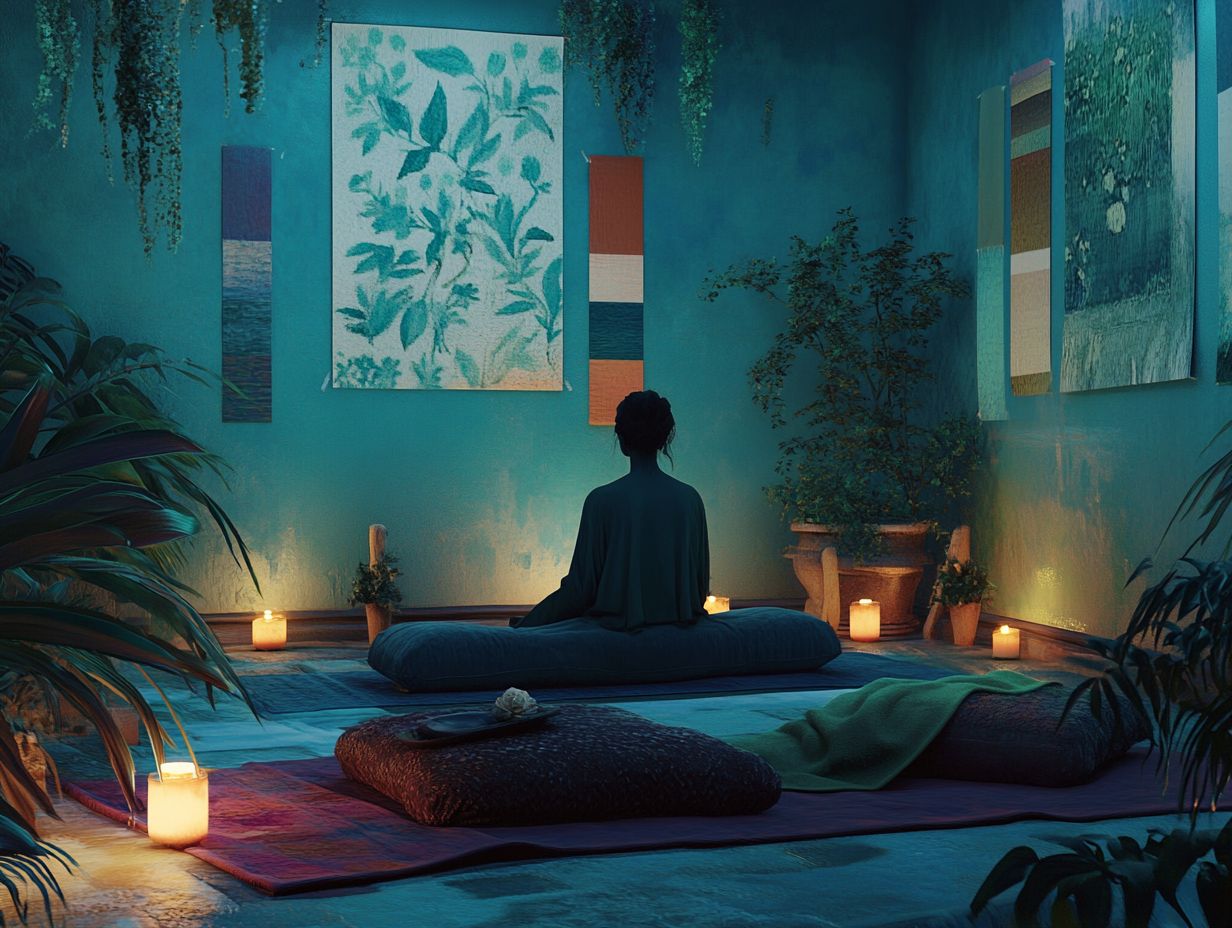
Color therapy, also known as chromotherapy, is a holistic healing practice that uses colors to promote physical, emotional, and mental well-being. It can be used for relaxation by incorporating specific colors into your environment or daily routine, as each color has its own unique properties and can affect our mood and energy levels.
How do I incorporate color therapy into my daily routine?
You can incorporate color therapy into your daily routine in various ways. Some options include wearing or surrounding yourself with certain colors, using colored lights or lamps, incorporating specific colored foods into your diet, and practicing visualization techniques with colors.
Which colors are best for relaxation?
There is no one-size-fits-all answer to this question, as different colors can have different effects on individuals. However, some common colors that are believed to promote relaxation include blue, green, and purple. These colors are often associated with calmness, serenity, and balance.
Can color therapy be used in addition to traditional relaxation methods?
Yes, color therapy can be used alongside traditional relaxation methods such as meditation, deep breathing, and yoga. In fact, including colors in these practices can enhance their effectiveness and deepen the relaxation experience.
Are there any precautions to take when using color therapy for relaxation?
While color therapy is generally safe, it is important to pay attention to any personal associations or reactions you may have to certain colors. For example, if a certain color triggers negative emotions or memories for you, it may not be the best choice for relaxation.
How long does it take for color therapy to have an effect on relaxation?
The effects of color therapy on relaxation can vary from person to person. Some individuals may experience immediate results, while others may need to practice consistently over time to notice a difference. It is important to be patient and listen to your body’s response to color therapy.
Start exploring the calming effects of color therapy today!

